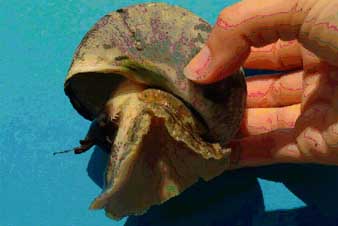West Indian Top Shell (Cittarium pica)
By Tim Sartwell
and
James B. Wood and Abel Valdivia (Eds)
and
James B. Wood and Abel Valdivia (Eds)
|
West Indian Top Shell (Cittarium pica)
By Tim Sartwell
and James B. Wood and Abel Valdivia (Eds) |
